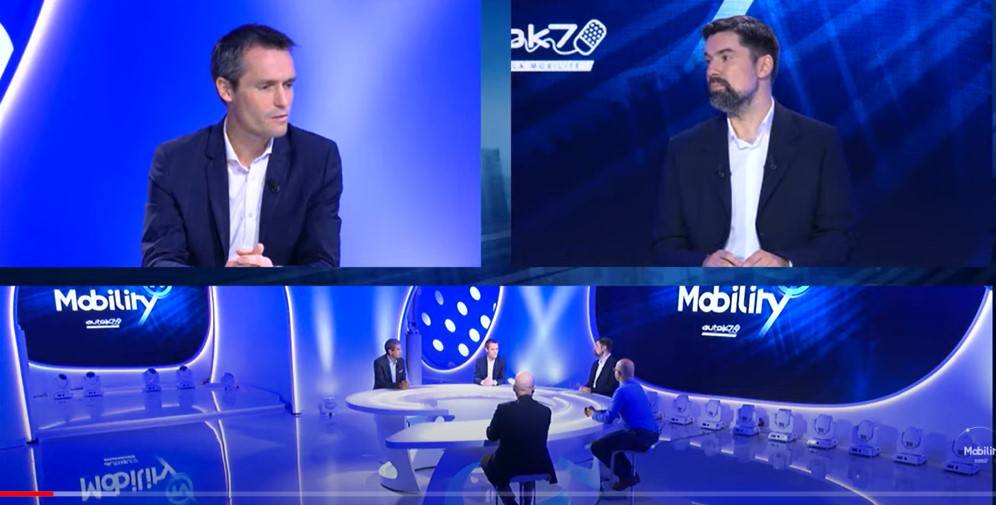At a time when the electricity grid is under severe pressure and consumers are looking to reduce their energy bills, intelligent control of electric vehicle charging appears to be a real opportunity to smooth out consumption peaks on the grid and allow users to recharge at the lowest cost. Régis Le Drézen, Managing director of Think Smartgrids, which federates the French smart grid ecosystem, spoke during a Mobility TV program about the integration of electric vehicles into the grid, alongside Qovoltis, Enedis and Mobileese.

For the French distribution system operator Enedis, anticipating the arrival of millions of electric vehicles that will plug into its network is a key issue. Giovanni Mattarolo, E-mobility project manager at Enedis, believes that it will be necessary to control EV charging much more precisely than simply recharging during off-peak hours at night. Enedis is therefore testing different “smart charging” scenarios to check the viability of different technical solutions, such as synchronizing charging with photovoltaic production.
Smart charging allows a vehicle’s battery to be recharged when there are no peaks in consumption on the power grid, and when the energy is the least “carbon intensive”. In addition to smart charging, Régis Le Drézen mentions vehicle-to-grid, or V2G technology, which allows the energy contained in the battery to be fed back into the grid. This technology can also be applied to power a house or a building. This intelligent control of battery charging/discharging is an additional lever for flexibility in electricity consumption, which can provide a very concrete solution to grid constraints.
François Gatineau, from the Mobileese design office, points out that without the development of intelligent charging control in parallel with the deployment of charging stations, there is a real risk that vehicle users will recharge at the same times, particularly on their way home from work, thus exacerbating the already existing peak. It is therefore essential to allow the user to plug in without the charging being triggered automatically.
This solution seems all the more relevant as for the network operator, once a charging control system exists, it becomes interesting to encourage the user to stay connected to a charging station during the whole time the vehicle is not running. Ehsan Emami of Qovoltis, a producer of smart charging stations, points out that the vehicle’s battery, which was previously unused 90% of the time, can be used to provide various services, such as vehicle-to-grid, network balancing and intelligent load shedding.
But in order to win over users, the incentives must be appropriate. Today, one of the major obstacles to the development of these services is the lack of adequate and truly profitable offers from electricity suppliers.
Enedis is therefore looking for solutions that are attractive and acceptable to the customer, whose participation is key. Surveys are conducted to verify that the solutions implemented are acceptable and offer a real gain for the user. Giovanni Mattarolo also mentions the role of recharge control in maximizing self-consumption for consumers equipped with solar panels.
Régis Le Drézen adds that pricing is a major issue in making charging control attractive. Coordinating the complex ecosystem that revolves around charging control will be key to guaranteeing attractive pricing for both the customer and the power network. Smart charging already allows substantial savings on energy bills, both for professional fleets and private individuals, but the challenge now is to develop even more precise control of charging to make it really coincide with the needs of the power grid.
However, François Gatineau reminds us of the many challenges that remain to be met in order to generalize charging control: very few vehicles still allow for bidirectional charging to enable V2G; the charging stations themselves must be equipped with the appropriate technology, but without being too expensive for private individuals; and finally, there is still no designated aggregator to coordinate the charging control of a pool of EV. Ehsan Emami adds that since the energy drawn off never exceeds 10% of the battery’s capacity, it is the aggregation of the power supplied by the various vehicles in a fleet that will enable the network operator to balance the network.
More generally, Régis Le Drézen reminds us of the need to prepare for the electrification of uses, without which it will be impossible to decarbonize the energy system. Electric vehicles represent a real opportunity to bring the necessary flexibility to a power network that is integrating more and more intermittent renewable energy. The digitization of the grid must therefore make it possible to match energy supply and demand, thanks to incentive price signals, a key issue for guaranteeing the resilience of the electricity grid.



